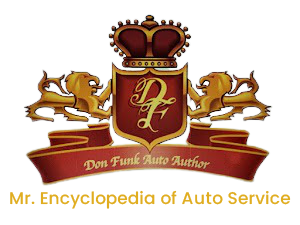In Chapter 13, Donald A. Funk unveils a game-changing revelation that forms the bedrock of success in the automotive service industry. Aptly titled “The Key Secret, The Buck Stops Here,” this chapter delves deep into the intricate details of achieving unparalleled success, presenting a comprehensive guide for navigating the complexities of the business. Funk commences with a powerful reminder of the Golden Rule for every business: putting oneself in the customer’s place. This sets the tone for the entire chapter, emphasizing the centrality of customer-centric principles in achieving lasting success. He astutely observes the challenges faced by automotive service outlets, spanning O.E.M. dealerships, franchisees, tire shops, and independents, shedding light on the common struggles with bottom lines and profit margins. The narrative pivots to the timeless wisdom encapsulated in the business model, a proven financial framework that has stood the test of time. Funk underscores the necessity of meticulous attention to each aspect of the Profit and Loss (P&L) statement, annually reviewing and adapting to changing economic realities. Labor cost emerges as a linchpin, the most critical expense line in the overall operational expenses, accentuating the need for precision in managing margins and markups. The heart of the chapter lies in Funk’s formula for achieving 30% Plus Margins, a model that intertwines sales, parts, technicians, service, and service manager benefits. This formula, backed by examples and real-world scenarios, provides practical guidelines for enhancing operations, leading to healthier profits and a robust balance sheet. Funk’s mantra, “If You Can’t Measure It, You Can’t Manage It,” becomes the guiding principle for businesses aiming to achieve desired results. He takes the reader on a journey through his experiences as an auto service consultant, emphasizing the importance of staying informed about competitors’ strategies and conducting regular market analyses. A highlight of the chapter is Funk’s illustration of how strategic investments, such as AI equipment like the Hunter Engineering Autonomous Quick Check Alignment machine, can yield substantial returns. He shares success stories, showcasing how such tools can build customer retention, and loyalty, and significantly impact the bottom line. The chapter concludes with an inspiring call to strengthen relationships with staff, emphasizing the shared commitment to delivering unparalleled consumer experiences. Funk’s philosophy revolves around building teams that treat consumers as prized trophies, a mindset that cascades from the front line to technicians in the back shop. In summary, Chapter 13 of “The Secrets of a Killer Auto Business Plan for Success” is a magnum opus, providing a roadmap for success in the automotive service industry. Funk’s blend of timeless principles, practical examples, and transformative insights makes this chapter an indispensable guide for industry professionals at all levels. By unpacking the key secret, Funk invites businesses to embrace change, empower their teams, and create an environment where success becomes not just a goal but an inevitable reality.
